Reviews
Fritz Lang
Germany, 1929
Credits
Review by Ian Johnston
Posted on 18 March 2014
Source Kino DVD
Categories Silent Lang
Thea von Harbou, Lang’s wife and regular co-screenwriter through his German period, has, to say the least, been on the receiving end of some uniformly bad press. Lotte Eisner, Lang’s most faithful critic, is a good case in point, where any perceived weaknesses in the films (excessive melodrama, sentimentality, and so forth) are made Harbou’s fault and the strengths ascribed to Lang’s mastery as a director. Eisner particularly makes this point with Lang’s last two silent films, Spies and Woman in the Moon, drawing on a contemporary critic, Herbert Jhering, as reinforcement (“wasting the fanaticism with which he works and his talent on scripts by Thea von Harbou”).
This defence of Lang against Harbou seems to me rather overblown and unfair. Lang’s own early work, above all his solo screenwriting credit for Die Spinnen, shows that he shared a taste as much as Harbou for the sensationalist pulp fiction that provided models for the films they made together. And there’s no reason to think that the weaker elements of a film - say, in the case of Woman in the Moon, the hamming-up of Friede and her fiancé Windegger with hand on hearts and blowing kisses to one another (a pity, given the generally restrained acting style in evidence) - were forced on Lang against his better judgement. Lang’s reputation as an autocratic ringmaster exerting absolute control on the set was well enough in place to believe that his vision was in accord with Harbou’s, and vice versa.
Which leads us to Woman in the Moon, a film which, equally unfairly, has a poor critical reputation, perhaps the worst of any of his silent films. The standard critical approach is to praise the fact-based depiction of a flight to the moon and regret the banal love story that it’s surrounded with. Lang certainly worked hard at giving a realistic basis to the fantasy of space flight, backed up by scientific work in the field. He and Harbou were friends with Willy Ley, who had written on space travel and was a founding member of Germany’s Society for Space Travel, and it was Ley who directed Lang to Hermann Oberth, author of an early influential book on rocket science and space travel and the man who was appointed technical advisor on the film. In addition, UFA used Oberth as promotion for the film by financing the launch of a liquid-fueled rocket, although in the end this never worked out. (Oberth eventually worked on the Nazis’ wartime V-2 rocket project—hence Thomas Pynchon’s name-checking of Woman in the Moon in Gravity’s Rainbow.)
So, a lot has of thought has gone into the feasible practicalities of a rocket launch: the shape of the rocket itself, the trajectory, speed, air pressure, gravitational pull, the issue of on-board weightlessness, and so forth. The launch itself is built up by Lang into a stately sequence at the centre of the film, intercutting between the transferral of the rocket from hangar to launch pad, the waiting crowds, an on-site broadcaster, and the astronauts themselves: wealthy rocket designer Wolf Helius; his chief engineer and friend Hans Windegger; astronomer Friede Venten, Windegger’s fiancé whom Helius secretly loves; elderly Professor Manfeldt whose ridiculed theory of gold deposits on the moon (!) has been the impetus to the whole expedition; and Walt Turner, the muscle fronting a consortium of evil capitalists (a suitably unpleasant — as always - Fritz Rasp). In spite of the predictions that haven’t held true, such as the launch out of a water pool or the rocket’s pilots being strapped into bunks next to the control panel (let alone the breathable lunar atmosphere) it’s still remarkably convincing; and, of course, there’s the famous countdown to lift-off, supposedly a Lang invention and the source for subsequent countdowns in the real world of rocket science.
In point of fact, this attention to realistic detail is also to be found in other aspects of Woman in the Moon. Take, for example, the opening sequence where Helius visits the now forgotten and impoverished Professor Manfeldt. We’re given both a physical sense of the professor’s garret apartment, its dilapidated state, the walls lined with handbills and posters in place of decent wallpaper, the broken down armchair held up by a pile of books; and also of the depth of emotion felt by the two men, Helius’ pity and sympathy on the one hand and Manfeldt’s vulnerability and pride on the other. This is characteristic of a film that aspires to the breadth of a novel with its slow and deliberate development of character and theme, in striking contrast to the sleek-lined pulp pleasures of Lang’s preceding film, Spies.
Woman in the Moon falls into three distinct sections, each handled with a mastery that also acts as a potent reminder of the near-perfection silent cinema had attained on a formal level by the end of the twenties. First, there’s the urban thriller detailing the lengths Turner and his industrialist masters will go to in order to gain control of the rocket and the promised riches of the moon. Then, there’s the central section of the film devoted to the technical details of the rocket launch and space flight, but which still allows for humour in the astronauts’ experience of weightlessness and in the character of Gustav, the boy stowaway inspired by his adventure comics, and also for wonder as the astronauts stand transfixed and mesmerised by the sight of the approaching moon.
The final section takes place on the moon itself, where there is again a shift in the concerns of the narrative. The villainous Turner comes to the fore again as he did in the first section, initiating a life-and-death struggle for control of the rocket. But more significant is Windegger’s mental collapse, wracked as he is by utter fear and despair that they may never return to Earth. Gustav von Wangenheim’s acting now goes into overdrive, twisting and contorting his features to mark himself as The Coward and implicitly as not worthy of Friede’s love. It’s an acting style that jars with the modern viewer (and which, for that matter, jars with the tone of performance of much of the film) and one that Lang seemed to encourage in his silent films to give expression to extremes of emotion—think of the now comic effect of Metropolis’ Freder’s jerky rushings to and fro.
It’s much more telling when Lang makes use of a simple visual effect, as with the shot of Friede’s tear falling on Helius’ wounded hand which she is dressing. That shot is a reprise of one from Spies, of a raindrop hitting Matsumoto’s hand prior to his seduction and ruin by Haghi’s agent Kitty. Here, however, it is, through Friede’s literal giving of a part of her body, a sign of a love which will not be openly acknowledged until the very final sequence of the film. That’s when Friede joins Helius in staying behind on the moon as the oxygen supplies on the rocket are no longer sufficient for all of them. In the film’s very last shot Woman in the Moon turns away from the science fiction trappings of the moonscape, the rocket, the stars of space above and focuses on the face of a woman (Gerda Maurus, incidentally Lang’s own lover at the time) as her man falls into her embrace. In the end, in spite of Lang’s fascination with the mechanics of space travel, his narrative, just like Tarkovsky’s in Solaris, brings it all back to Man—or, more accurately in Lang’s case, Man and Woman. Was there ever a happier ending in a Lang film? With it, Lang’s silent cinema ends, rather uncharacteristically, on a moment of pure romanticism.
More Silent Lang
-
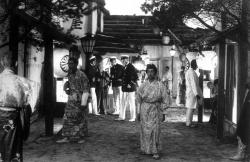
Harakiri
1919 -
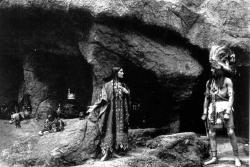
The Spiders
1919 -
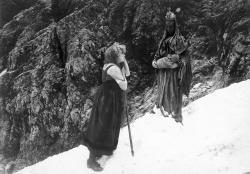
The Wandering Shadow
1920 -
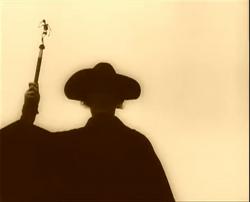
Destiny
1921 -
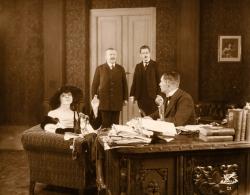
Four Around the Woman
1921 -
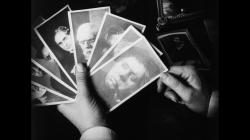
Dr. Mabuse the Gambler
1922 -
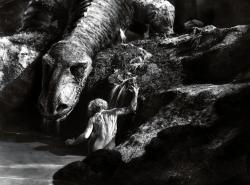
Die Nibelungen
1924 -

Metropolis
1927 -
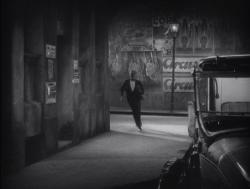
Spies
1928 -
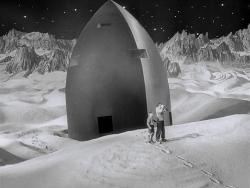
Woman in the Moon
1929
We don’t do comments anymore, but you may contact us here or find us on Twitter or Facebook.



